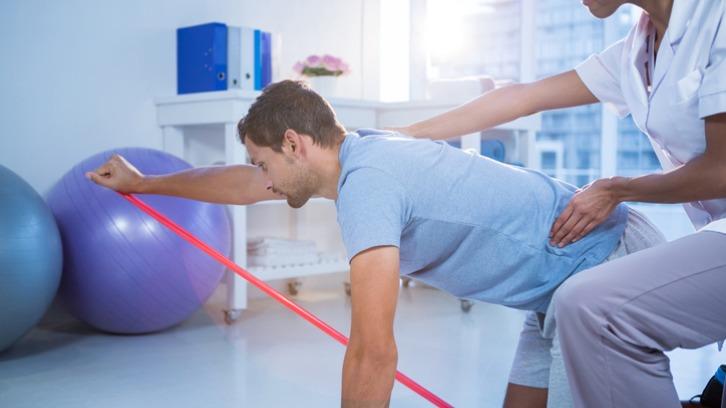Physiotherapy Exercises For Muscle Injuries
Minor muscle injuries can be treated with physiotherapy exercises at home. I had many injuries and learned a lot from these exercises. The knee and back are the most frequently injured parts of the body so that I will focus on these.

Physical therapists, also known as physiotherapists, are often very busy. You may need to wait several weeks for treatment if your injury isn’t serious.
You could also experience stiffness and loss of muscle tone. This can make the injury more severe and prolong your recovery. These simple physiotherapy exercises will keep your muscles active.
You may already feel some pain from the injury. This is something you will need to be aware of. You should be aware of two types:
Stiffness can cause pain – It is manageable during physiotherapy but will disappear soon. It is okay to continue with this type of pain.
Pain due to damage – It is unbearable and will not go away for several days. Do not do any exercise. Your muscles are not ready to exercise yet. Continue to R.I.C.E.
Writing a plan is the best way to go about physiotherapy exercises. Keep track of the pain response to each exercise. Depending on the severity of the pain, you can increase or decrease the number of exercises.
Your muscles are delicate, and you should pay attention to the quality of every movement. As you exercise, be slow and steady. Visualize the muscle.
Exercises in physiotherapy for the back
Back pain is something almost everyone has heard of. We are all familiar with the term and the pain. The pain in the backbone, also known as back pain, is something almost everyone experiences at one time or another. This is usually due to negligence, but sometimes it is considered a routine condition. Petty patients often experience more pain later.
- Lie on your back with both knees bent. Arch your back slightly and tilt your hips inwards. You can move from one movement to the next, but don’t force your arching. Now relax, and then tilt your hips forward while keeping your bottom on a flat surface. Your lower back will press into the floor.
- Lie on your back with both legs straight. Your left knee should be bent towards your chest. Tend to the stretch for 10 seconds and then relax slowly. Continue with the right knee.
- Place your head on the ground, with your chin on the floor. With your hands on the floor, place your elbows in your pockets. Keep your eyes straight ahead, lift your head slowly and keep your hips flat on the ground, so your back arch is elevated. Allow your arms to bear the weight. Slowly relax.
- Arms at your sides, stand up. Your right hand should be sliding down your leg. Slowly, slowly get back up and relax. Repeat on your left side.
Exercises in physiotherapy for the knee
- Place your legs straight ahead of you on the ground. Place your left hand under your left knee. Your quads should be contracted so that your knee presses against your hand. (Lift your heel in the air). Ten seconds. Continue with your right leg.
- If you find the above exercise too difficult, try placing a folded pillow under each knee. Keep your knee bent and lift your heel as usual.
- Place your back flat on your stomach with both of your legs straight. Slowly bend your left leg as far as you can. For 5 seconds, hold the position. Slowly straighten your knee and return to the original position. Continue with your right leg.
- Place your head on your stomach. Place one knee on your back (foot flat on the floor) and the other straight. The straight leg should be lifted (about 1 foot). For 5 seconds, hold the straight leg up. Continue with the other leg.
These physiotherapy exercises are best used in conjunction with professional care or as preventative measures. Please consult your doctor if you are experiencing pain due to an injury.
These physiotherapy exercises can be done even if you aren’t injured. Avoid common injuries to certain areas of your body. Include the exercise in your regular workout at least once per week.
Take control of your recovery, and you will soon be able to return to an active, pain-free life.
